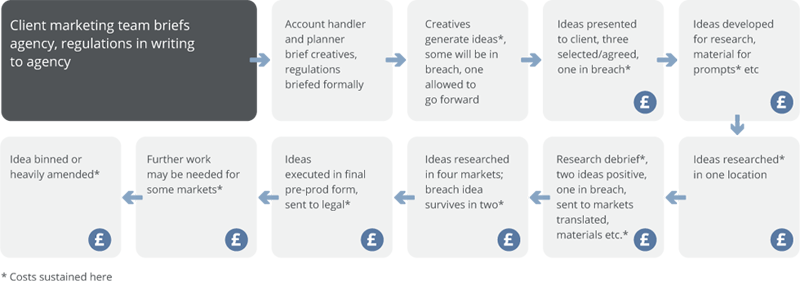The fruit hangs high these days
Growth - once an assumption, now a presumption. For major agency groups in particular, the fruit hangs high these days. Slow organic growth in established markets, client procurement departments, intense competition in emerging markets, and - to some eyes - sexier competition in new(er) media all combine to make revenue growth as difficult and demanding as the path of virtue.
So, as you survey this uninviting terrain, attention must turn to the organisation’s fitness to conquer it. Is that a lean and modern fighting machine you see behind you? The drivers and valets might have gone, HQs have moved East, and regimental numbers have been cut to the bone, but are remaining forces fighting with intelligence, or charging towards massed tanks with swords drawn?
It may be necessary to be slimmer, but it’s better to be smarter.
More channels, more data, more issues
The world, many commentators will tell you, is “getting smaller”. Last time we looked, it was getting bigger. More people, more media, more channels, more competition, more data (as distinct from intelligence), more government, more rules, more interference, more demands from more clients. We think they mean that brands can and do travel faster than ever, but that doesn't make the trip easier.
So the world is getting smaller in the sense that the brand communications world is managed from fewer places: the top three holding companies account for more than half of worldwide advertising revenues, and major offices in their networks will derive as much as three quarters of their revenue from international brands. So the world isn’t smaller, it’s bigger and it’s sitting on your doorstep wondering if you know better than your competition what you’re doing.
You might even be asking yourself the same question.
Developing international commercial communications sometimes seems to require the cunning of Machiavelli and the clout of a squadron of B52s. Are there more clients than countries? Will the Account Director throw a croissant at the French client? The meeting of process and creativity is difficult enough. Doing that to budget and deadline is harder still. Throw in a regulation-sensitive product with different rules for different markets and no wonder you sleep like a turkey in November. Here are two things to help you sleep better:
- A means by which creative time is used more efficiently
- And the chance of an expensive mistake greatly reduced
The first might be something of a breakthrough and while a mistake may not happen often you might admit, like Tom Jones, that it’s not unusual.

A typical international copy development process, with related costs, out of a single office:

We estimate that in the case of a process such as the one shown above, the minimum cost of developing copy that breaches regulations is £35,000 (based on one major market only). This is calculated as follows:
- At least 25% of creative team’s time/costs spent developing “breaching” copy: £10,000
- At least 25% of account handler’s time: £5,000
- Research materials: £10,000
- At least 25% of marketing manager’s costs: £10,000
In addition, there may be costs in the region of £22,000 covering legal, agency and management charges if the breaching copy is aired, a complaint lodged, upheld and not informally resolved. The following estimates are again based on one major market only, with a minimum of 8 days’ work spread over a four-week period:
- Legal counsel (internal) £6,000 (5 days - attendance, prep, responding)
- Legal counsel (external) £8,000 (3 days - attendance, prep, responding)
- Agency time £5,000
- Marketing management time £3,000
Write-off costs would range from £50,000 to £1 million; costs of replacement material would be in a similar range
Additional incalculable costs are to a brand or company’s goodwill from the publication of adverse adjudications, and the difficulties caused internally and externally in agency and client organisations.
And if you think the above is either fanciful or over-egged or both, check the ASA’s adjudications pages here
So, that’s the case. In a nutshell:
Intelligence is the new art-bag: agencies need to know (instantly) much more than they know now in order to deliver better and faster to international clients. Right now, regulations are largely national and inaccessible. Brands and agencies need the opposite.
Creative time is precious and expensive; make the most of it.
Waste less time, make fewer mistakes, sleep like a baby.
